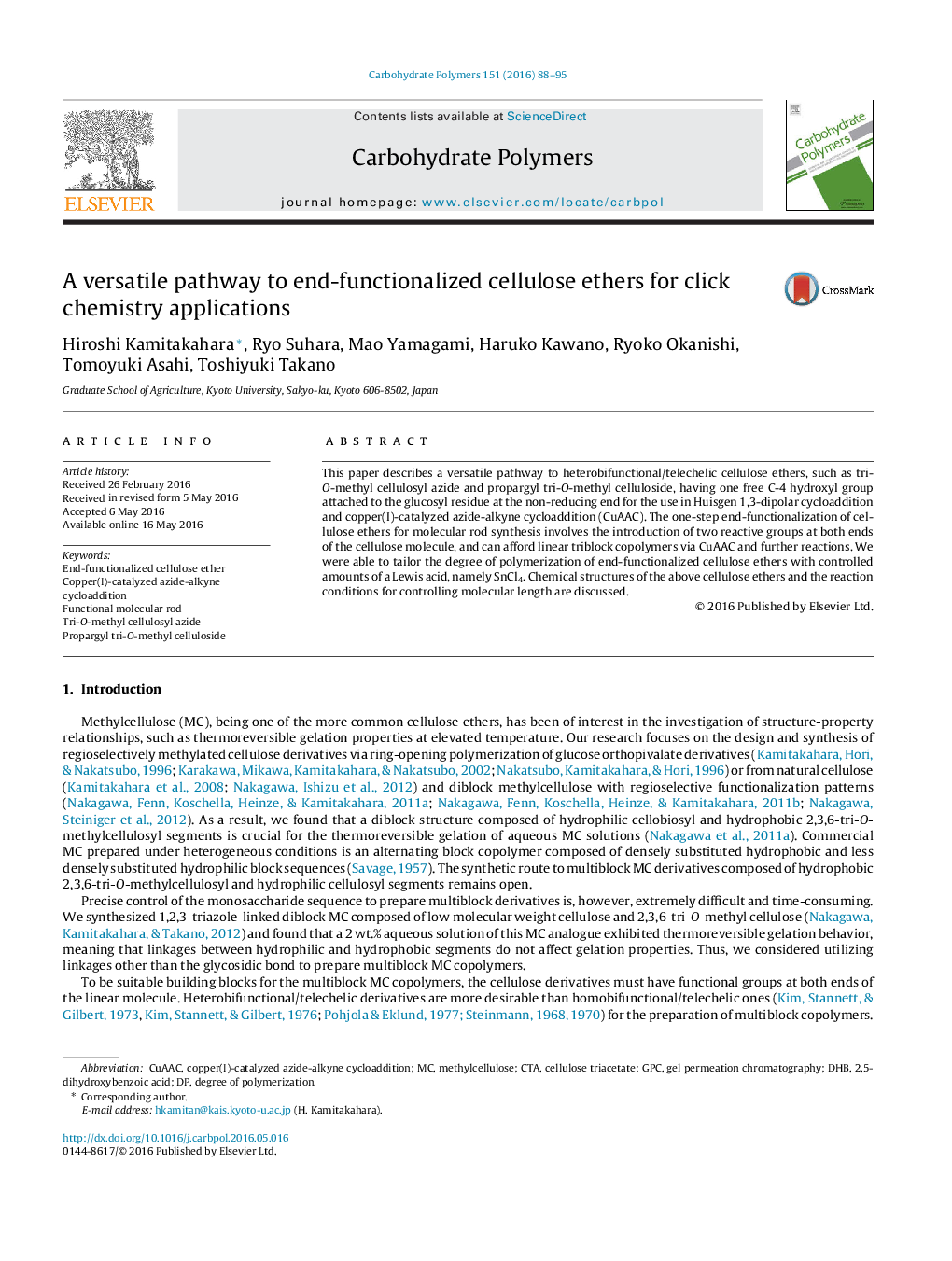| Article ID | Journal | Published Year | Pages | File Type |
|---|---|---|---|---|
| 1382975 | Carbohydrate Polymers | 2016 | 8 Pages |
•A pathway to heterobifunctional/telechelic cellulose ethers was established.•Cellulose ethers were end-functionalized with tailored molecular weight.•End-functionalized cellulose ethers were synthesized in one step.•Tri-O-methyl cellulosyl azide was prepared from tri-O-methyl cellulose.•Propargyl tri-O-methyl celluloside was prepared from tri-O-methyl cellulose.
This paper describes a versatile pathway to heterobifunctional/telechelic cellulose ethers, such as tri-O-methyl cellulosyl azide and propargyl tri-O-methyl celluloside, having one free C-4 hydroxyl group attached to the glucosyl residue at the non-reducing end for the use in Huisgen 1,3-dipolar cycloaddition and copper(I)-catalyzed azide-alkyne cycloaddition (CuAAC). The one-step end-functionalization of cellulose ethers for molecular rod synthesis involves the introduction of two reactive groups at both ends of the cellulose molecule, and can afford linear triblock copolymers via CuAAC and further reactions. We were able to tailor the degree of polymerization of end-functionalized cellulose ethers with controlled amounts of a Lewis acid, namely SnCl4. Chemical structures of the above cellulose ethers and the reaction conditions for controlling molecular length are discussed.
